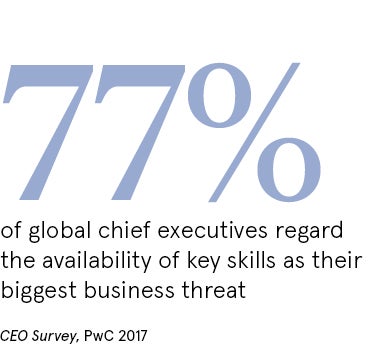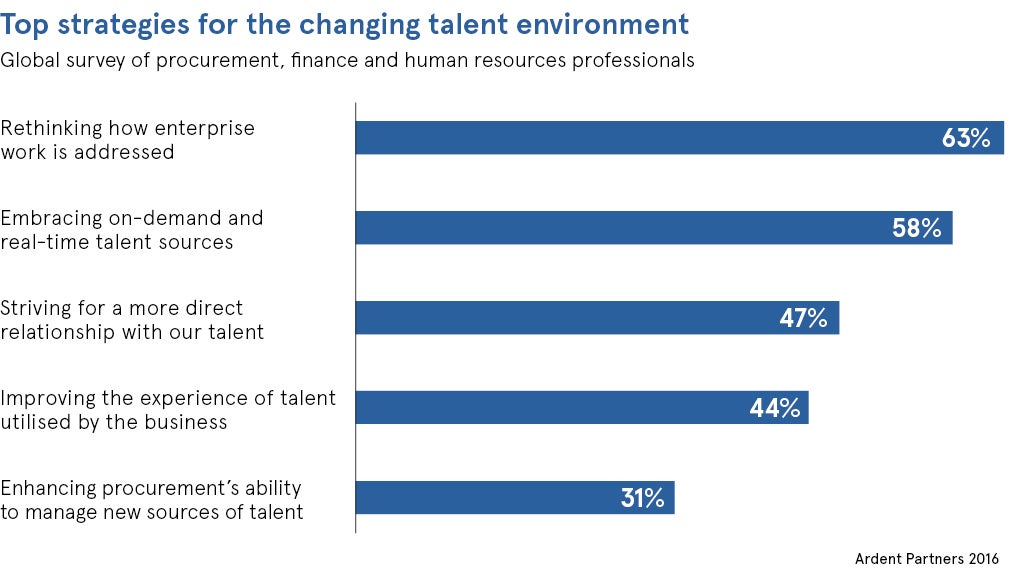The employment landscape has undergone a dramatic shift in recent years, with skilled talent often choosing alternative working models over permanent, full-time positions. In fact, research by Ardent Partners reveals that 40 per cent of the total global workforce consists of contingent workers, including contractors, freelancers and temporary workers.
In response to this trend, more organisations are turning to contingent talent pools to meet changing business needs. Yet while contingent workers help organisations compete globally, human resources leaders have traditionally geared their talent management strategies towards their permanent workforce, so they risk missing out on the expertise and flexibility that non-permanent workers can provide.
It’s becoming clear that traditional talent management models are no longer viable for many organisations. Forward-thinking employers are therefore re-evaluating their talent strategies and developing a total talent mindset, enabling them to take a holistic view of their entire workforce, including permanent and non-permanent workers, and even non-human options such as robots.
Yet while the concept of total talent management is starting to gather pace, what does it really mean and how prepared is human resources for this truly integrated and modern approach?
Breaking down barriers
Essentially, total talent management enables organisations to break down barriers between their permanent and non-permanent workforce, enabling employers to focus on the value a worker can provide to the business, rather than their employment status.
“Total talent management requires the business to implement a universal, comprehensive programme that breeds consistency through using a blend of the different workers who exist in the modern working environment,” explains Neil Pickering, customer and industry insight manager at Kronos.
Taking an integrated approach to talent enables organisations to become more agile and efficient, so leaders are better equipped to make strategic decisions about acquiring talent from a range of sources.
In many organisations, HR has responsibility for permanent employees, while procurement focuses on contingent talent, which often leads to both functions operating in silos, detached from one another. Yet when they align their strategies, using a joined-up, total talent approach, the benefits are significant.
“When permanent and non-permanent workforces are no longer managed separately, employers can focus on attracting, engaging and retaining the right person with the right skills, regardless of how they need to be employed,” says James Hick, managing director of ManpowerGroup UK.
This ability to attract and retain the best talent is often a key challenge for many organisations. Talent shortages can be seen as a major constraint on an organisation’s ability to deliver on strategic objectives, with PwC’s 2017 CEO Survey revealing that 77 per cent of global chief executives regard the availability of key skills as their biggest business threat.
 “There are talent shortages in many sectors globally and it’s pretty apparent that these shortages are not being met by traditional talent strategies,” says David Collings, professor of human resource management at Dublin City University Business School.
“There are talent shortages in many sectors globally and it’s pretty apparent that these shortages are not being met by traditional talent strategies,” says David Collings, professor of human resource management at Dublin City University Business School.
Statistics shows that while employers are becoming more aware of integrated approaches to talent management, challenges still remain when it comes to implementation. For instance, a 2017 report by ManpowerGroup revealed that 89 per cent of HR leaders recognised the value of taking a more holistic view of their workforce, but just 44 per cent had started to adopt such an approach.
Professor Collings points out that most human resources departments are behind the curve with this because HR is still not seen as a strategic partner in the business.
This is highlighted in Mercer’s 2016 Global Talent Trends report, which found that 85 per cent of organisations worldwide recognised that their talent management programmes needed an overhaul, but only 4 per cent of human resources professionals believed the HR function was viewed as a strategic business partner in their organisation.
“The first step for HR is working to reposition its contribution as strategic as opposed to operational,” says Professor Collings. “HR needs to re-orient itself from a more downstream function that spends most of its time fire-fighting, to devoting more time to strategic issues.”
We need to think outside traditional employment relationships and encourage our organisational leaders to do the same
Another barrier preventing employers from developing a total talent model is that HR can sometimes struggle to push talent to the top of the agenda with the C-suite. This is where HR needs to lead the conversation around modern talent strategies and create awareness among executives of the benefits of total talent management.
“In many instances, talent discussions come up in reaction to a particular issue, as opposed to the development of a proactive talent strategy,” says Professor Collings. “HR needs to frame the talent landscape in a way that resonates with leaders. There is little doubt that contingent approaches to talent should be part of this discussion for many organisations.”
Kim Castelda, chief people officer at US-based software firm Bullhorn, adds that HR should be ready for all kinds of talent. “HR leaders need to lead the creative thinking around finding the best talent,” she says. “We need to think outside traditional employment relationships and encourage our organisational leaders to do the same.”
Buy-in from stakeholders, developing a proactive talent strategy, and building relationships with key partners are all central to implementing a total talent management model. It’s also crucial that employers invest in the technology that will support a fully blended approach.
Mr Pickering at Kronos believes that adopting automation and artificial intelligence, as well as having real-time insight through the use of data and analytics, are essential. “HR leaders need to understand how technology is shaping the way talent can be deployed to meet demand most effectively,” he says. “Embracing this new technology to help drive and support business operations and decision-making is the only way to develop a total talent management model that benefits everyone.”
Organisations can gain complete oversight of their workforce by streamlining the three elements of talent sources, analytics and technology, adds ManpowerGroup’s Mr Hick. He concludes: “In unifying and connecting these three areas, organisations have a single point of truth, the intelligence they need to make more informed, strategic choices about acquiring, developing and retaining all talent types.”
Breaking down barriers


